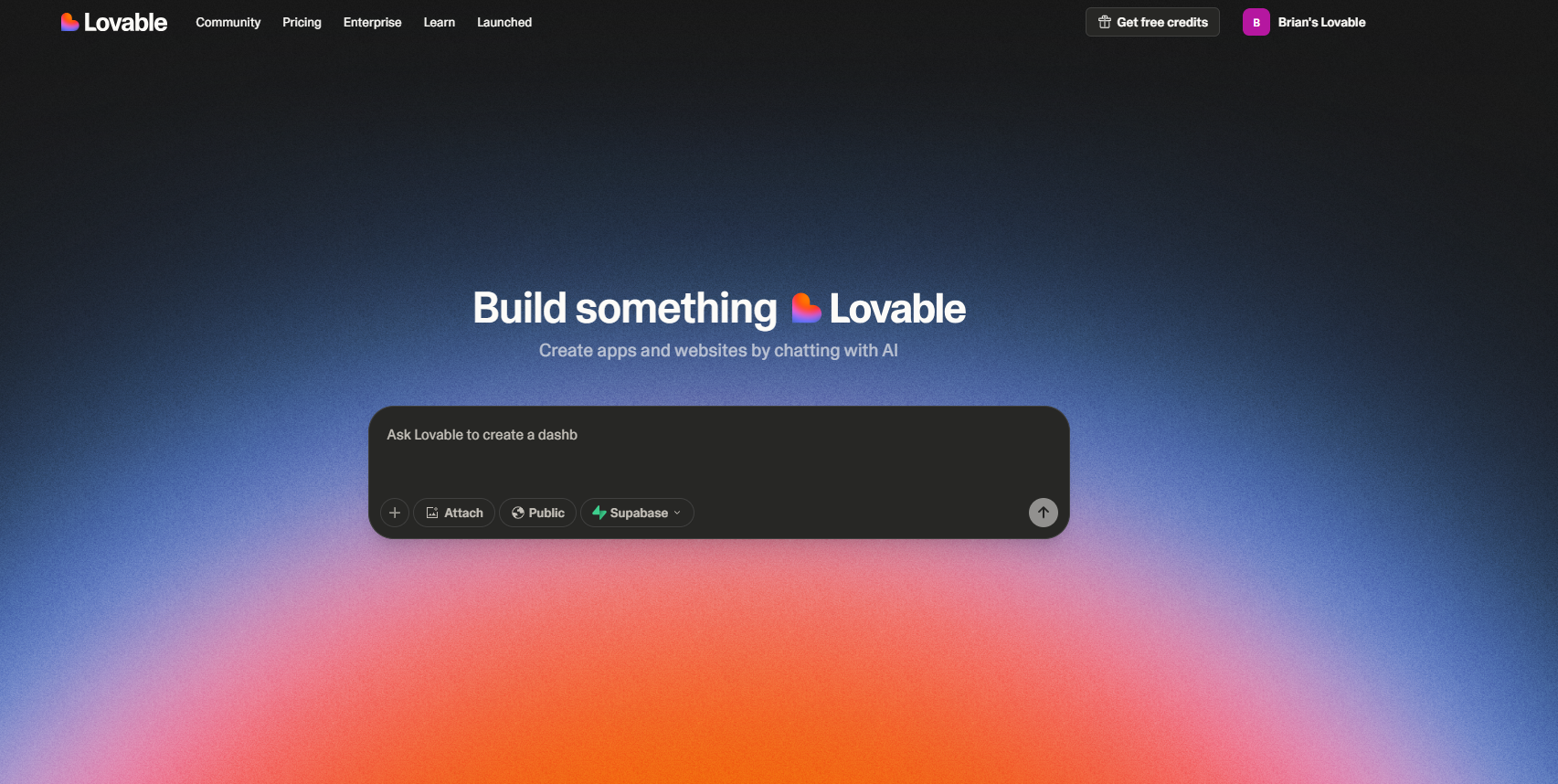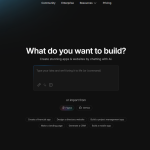MVP Development Business Guide: Lovable.new & Bolt.dev
Business Overview
Building MVPs (Minimum Viable Products) for startups and entrepreneurs using AI-powered development tools like Lovable.new and Bolt.dev represents a lucrative opportunity. You can deliver functional products in days rather than months, while charging premium rates for rapid development.
Target Market
Primary Clients
- Early-stage startups seeking to validate ideas quickly
- Entrepreneurs with limited technical backgrounds
- Small businesses wanting to digitize their operations
- Corporate innovation teams are testing new concepts
- Investors who need proof-of-concept applications
Client Pain Points You Solve
- Long development cycles (months to years)
- High upfront costs ($50k-$200k+ for traditional development)
- Technical complexity and hiring challenges
- Risk of building the wrong product
- Need for rapid market validation
Service Offerings
Core MVP Development Services
1. Web Application MVPs
- SaaS platforms (project management, CRM, analytics)
- Marketplace applications (two-sided platforms)
- Social platforms (community, networking, content sharing)
- E-commerce solutions (online stores, booking systems)
- Educational platforms (courses, tutorials, assessments)
2. Mobile-First MVPs
- Progressive Web Apps (PWAs) that work on mobile
- Hybrid mobile applications
- Location-based services
- On-demand service apps
3. Specialized Industry Solutions
- Healthcare: Patient portals, appointment systems
- Finance: Expense trackers, budgeting tools
- Real Estate: Property management, listing platforms
- Food & Beverage: Ordering systems, inventory management
- Education: Learning management systems, student portals
Value-Added Services
Pre-Development
- Idea validation workshops – help refine concepts
- User story mapping – translate ideas into features
- Technical feasibility assessment
- Competitive analysis and feature recommendations
Post-Development
- User testing setup and feedback collection
- Analytics implementation (Google Analytics, Mixpanel)
- Performance optimization
- Maintenance and updates (monthly retainer)
- Scaling roadmap for future development
Pricing Strategy
Package-Based Pricing
Starter MVP Package ($3,000 – $5,000)
- 5-10 core features
- Basic user authentication
- Simple dashboard
- Mobile responsive design
- 1-2 weeks delivery
- Basic analytics setup
Professional MVP Package ($5,000 – $10,000)
- 10-20 features
- Advanced user management
- Payment integration
- Custom branding
- Database design
- API integrations
- 2-3 weeks delivery
- Advanced analytics
Enterprise MVP Package ($10,000 – $20,000)
- 20+ features
- Complex workflows
- Multi-user roles
- Advanced integrations
- Custom APIs
- Performance optimization
- 3-4 weeks delivery
- Comprehensive testing
Additional Revenue Streams
- Maintenance retainers: $500-$2,000/month
- Feature additions: $500-$2,000 per feature
- Training sessions: $150-$300/hour
- Consulting calls: $200-$500/hour
Development Process
Phase 1: Discovery & Planning (2-3 days)
- Client consultation – understand vision and goals
- Feature prioritization – identify core vs. nice-to-have
- User flow mapping – design user journey
- Technical architecture – plan database and integrations
- Timeline and milestone setting
Phase 2: Rapid Development (1-3 weeks)
- Setup and configuration in Lovable.new or Bolt.dev
- Core feature development – authentication, main functionality
- UI/UX implementation – responsive design, branding
- Database integration – user data, content management
- Third-party integrations – payments, email, analytics
Phase 3: Testing & Launch (2-5 days)
- Functionality testing – all features working
- Cross-browser/device testing
- Performance optimization
- Security review – basic security best practices
- Deployment – hosting setup and domain configuration
- Client training – how to use and manage the application
Phase 4: Post-Launch Support (Ongoing)
- Bug fixes – immediate issue resolution
- User feedback – collect and analyze user behavior
- Feature iterations – based on user feedback
- Performance monitoring – uptime and speed optimization
Platform-Specific Advantages
Lovable.new Strengths
- Full-stack applications with backend and frontend
- Natural language development – describe features in plain English
- Rapid prototyping – iterate quickly based on feedback
- Built-in hosting – seamless deployment
- Component libraries – professional UI out of the box
Bolt.dev Strengths
- Web application focus – excellent for web-based MVPs
- AI-powered coding generates clean, maintainable code
- Integration capabilities – connect with external services
- Customization options – more control over the final product
- Performance optimization – efficient code generation
Marketing & Client Acquisition
Digital Marketing
- LinkedIn outreach – target startup founders and entrepreneurs
- Content marketing – case studies, MVP development guides
- SEO-optimized website – rank for “MVP development” keywords
- Social media presence – showcase completed projects
- Email marketing – nurture leads with valuable content
Networking & Partnerships
- Startup events – pitch competitions, demo days
- Accelerator partnerships – work with startup incubators
- Investor network – connect with VCs who need MVPs built
- Business development – partner with consultants and agencies
- Referral program – incentivize existing clients to refer others
Portfolio Development
- Case studies – detailed project breakdowns
- Before/after showcases – demonstrate transformation
- Client testimonials – social proof and credibility
- Demo applications – show capabilities across industries
- Video presentations – walk through completed projects
Common MVP Types by Industry
SaaS/Tech Startups
- Project management tools – task tracking, team collaboration
- CRM systems – customer relationship management
- Analytics dashboards – data visualization and reporting
- Communication platforms – team chat, video conferencing
- Automation tools – workflow management, integrations
E-commerce/Retail
- Marketplace platforms – buyer-seller connections
- Inventory management – stock tracking, ordering
- Customer portals – order tracking, support
- Subscription services – recurring billing, management
- Review platforms – customer feedback systems
Healthcare/Wellness
- Patient portals – appointment scheduling, records
- Telemedicine platforms – virtual consultations
- Wellness tracking – health metrics, progress monitoring
- Practice management – scheduling, billing, records
- Mental health platforms – therapy, support groups
Education/Training
- Learning management systems – course delivery, tracking
- Student portals – grades, assignments, communication
- Corporate training – employee development, compliance
- Certification platforms – testing, credential management
- Tutoring platforms – student-teacher matching
Success Metrics & KPIs
Client Success Metrics
- Time to market – MVP launch within 2-4 weeks
- User adoption – active users within the first month
- Investor interest – funding rounds or investor meetings
- Revenue generation – paying customers within 3 months
- Product-market fit – user retention and engagement
Business Growth Metrics
- Monthly recurring revenue – from maintenance and updates
- Client lifetime value – average revenue per client
- Referral rate – percentage of clients who refer others
- Project completion time – efficiency improvements
- Profit margins – cost optimization over time
Risk Management
Technical Risks
- Platform dependency – diversify across multiple tools
- Scalability limitations – plan migration paths for growth
- Security vulnerabilities – implement basic security practices
- Performance issues – monitor and optimize regularly
Business Risks
- Client scope creep – use detailed contracts and change orders
- Payment delays – require deposits and milestone payments
- Competition – differentiate through specialization and service
- Market changes – stay updated on industry trends
Getting Started Action Plan
Week 1-2: Foundation
- Learn the platforms – complete tutorials for Lovable.new and Bolt.dev
- Build sample MVPs – create 2-3 demo applications
- Develop pricing structure – finalize packages and rates
- Create a basic website – portfolio and service descriptions
Week 3-4: Marketing Setup
- LinkedIn optimization – professional profile highlighting MVP services
- Content creation – write initial blog posts and case studies
- Network building – connect with startup communities
- Portfolio development – showcase demo applications
Weeks 5-8: Client Acquisition
- Outreach campaigns – contact potential clients directly
- Referral program – incentivize recommendations
- Speaking opportunities – present at startup events
- Partnership development – connect with complementary services
Months 2-3: Scale & Optimize
- Process refinement – streamline development workflow
- Team building – hire assistants or subcontractors
- Service expansion – add new packages or specializations
- Client success – focus on delivering exceptional results
Conclusion
Building MVPs with Lovable.new and Bolt.dev offers a compelling business opportunity with high demand, premium pricing, and rapid delivery capabilities. Success depends on understanding client needs, delivering quality products quickly, and building strong relationships for long-term growth.
The key is to position yourself as a strategic partner who not only builds software but also helps validate business ideas and accelerate time-to-market. Focus on industries you understand, develop repeatable processes, and continuously improve your service offerings based on client feedback and market demands.


